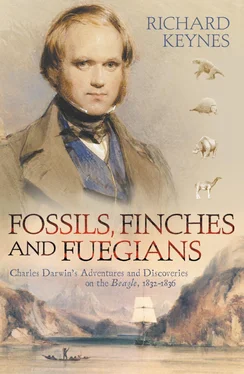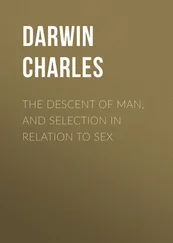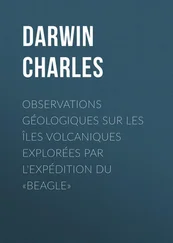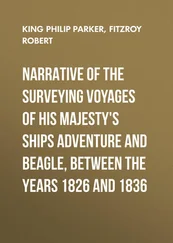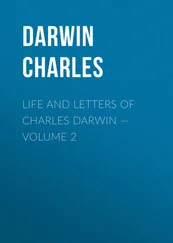His copy of Volume 1 of Lyell’s Principles was inscribed ‘Given me by Capt. F.R. C.Darwin’, and he had been advised by Henslow to read it ‘but on no account to accept the views therein advocated’.
Charles’s first geological project was to examine the structure of Quail Island, which as it happened was painted by the artist Conrad Martens about eighteen months later, on his way out to join the Beagle at Monte Video (see Plate 1). It was a ‘miserable desolate spot less than a mile in circumference’ in the harbour of Porto Praya, but served Charles usefully as a key to the structure of the main island of St Jago. He wrote in his Autobiography :
The geology of St Jago is very striking yet simple: a stream of lava formerly flowed over the bed of the sea, formed of triturated recent shells and corals, which it has baked into a hard white rock. Since then the whole island has been upheaved. But the line of white rock revealed to me a new and important fact, namely that there had been afterwards subsidence round the craters, which had since been in action, and had poured forth lava. It then first dawned on me that I might perhaps write a book on the geology of the various countries visited, and this made me thrill with delight. That was a memorable hour to me, and how distinctly I can call to mind the low cliff of lava beneath which I rested, with the sun glowing hot, a few strange desert plants growing near, and with living corals in the tidal pools at my feet.
In the notes made at the time Charles’s interpretation was that both islands were volcanic, and had at some not too distant time been submerged beneath the sea, where they quietly collected beds of marine material, followed by another layer of molten lava. 53 ‘The whole mass was then raised, since which or at the time there has been a partial sinking . I judge of this from the appearance of distortion, & indeed the distant line of coast seen to the East, which is considerably higher, bears me out.’
This was accompanied by a section drawing of Quail Island showing the successive layers. Tests on specimens from the white layer D showed that it ‘Effervesces readily with Mur: Acid, gives precipitate with Oxalate of Ammonia. – Under Blowpipe becomes slowly caustic, & with heat Cobalt remains of a Violet colour. – Carbonate of Magnesia. (?) Carb. of Lime.’ (The white line may be seen in Plate 1.)
In his first independent geological project, Charles’s careful analysis of the sequence of rocks in Quail Island showed with what great effect he had followed the teaching of Sedgwick and Henslow. His notes also reveal how geology allowed him from the start to exercise to the full his latent passion for argument and theorisation. On completing his notes on Quail Island, he immediately reread them and wrote, ‘I have drawn my pen through those parts which appear absurd,’ and a year later he added a long list of further comments and theories. At the same time he immediately fell in wholeheartedly with Lyell’s gradualist and not yet generally accepted approach that geological changes resulted from slow processes operating over a long period of time. Thus his evidence clearly supported the view that both subsidence and elevation of the land must have taken place over an appreciable area in the not too distant past, and he was led to agree with Lyell that the forces involved might act slowly and evenly so as to leave superficial features of the landscape and buildings undisturbed. Another relevant factor in the story was Charles’s identification of the dust that thickly coated the ship throughout their visit to St Jago, ‘to the great injury of fine astronomical instruments’, as volcanic in origin.
Charles reacted to his first day on St Jago with the enthusiasm that never deserted him:
I returned to the shore, treading on Volcanic rock, hearing the notes of unknown birds, & seeing new insects fluttering about still newer flowers. It has been for me a glorious day, like giving to a blind man eyes – he is overwhelmed with what he sees & cannot justly comprehend it. Such are my feelings, & such may they remain.
CHAPTER 5
Across the Equator to Bahia
On the day originally fixed for sailing on across the Atlantic to Brazil, FitzRoy was busy on shore complying with Captain Beaufort’s strict instructions that no port should be quitted before not only the magnetic angle, but also the dip and daily variation had been ascertained. On 8 February the instruments were re-embarked, and after swinging the ship and determining less than twenty minutes’ difference in any position of the bearing of the peak eleven miles away, the Beagle weighed anchor and sailed. On 10 February they came alongside the packet Lyra , on passage from London to Rio de Janeiro, and were pleased to find that she was carrying a box of six sounding-leads for them, modified by their designer to operate satisfactorily at depths well below a hundred fathoms. Charles posted a brief letter to his father, in case it might arrive sooner than a long one due to be dispatched from Bahia, in which he said:
I think, if I can so soon judge, I shall be able to do some original work in Natural History – I find there is so little known about many of the Tropical animals.
At sunset on 15 February the St Paul Rocks were seen on the horizon, these being the summit of a sunken mountain, and further from land than FitzRoy had ever seen a group of such small rocks. At daylight next morning the sea was smooth, and while the Beagle sailed round so that Stokes could take angles and make soundings, two boats were sent out to enable FitzRoy, Charles and a party to land on the rocks and examine them. As FitzRoy described it:
When our party had effected a landing through the surf, and had a moment’s leisure to look about them, they were astonished at the multitudes of birds which covered the rocks, and absolutely darkened the sky. Mr Darwin afterwards said that till then he had never believed the stories of men knocking down birds with sticks; but there they might be kicked before they would move out of the way. The first impulse of our invaders of this bird-covered rock was to lay about them like schoolboys; even the geological hammer at last became a missile. ‘Lend me a hammer?’ asked one. ‘No, no’ replied the owner, ‘you’ll break the handle’; but hardly had he said so, when, overcome by the novelty of the scene, and the example of those around him, away went the hammer, with all the force of his own right arm. 54
In his own account Charles did not deny that he had been somewhat carried away. So he participated in the slaughter of birds on land while a similar struggle to obtain fish for the cooking pot was also taking place in the surrounding waters, both birds and fish being welcome to men who had been living too long on salt provisions. But he nevertheless found time to note that unlike almost all other isolated rocks in mid-ocean, St Paul was exceptionally not volcanic in origin, but was a mineral unfamiliar to him that incorporated streaks of serpentine. * The surrounding waters were very deep, so that it was the tip of a very large and steeply sided mountain. His conclusion was correct, and the modern view is that St Paul is an important example of the primordial material of the earth’s mantle modified to become the basalt layer of the oceanic crust. The only birds to be seen were boobies, a species of gannet, and noddies, a species of tern; and the only other animals of any size were large tropical crabs of the genus Grapsus . Not a single plant, nor even a lichen, could Charles find growing on the rocks. There were some ticks and mites, and a small brown moth feeding on feathers that could have arrived with the birds; a rove beetle and a woodlouse from beneath the dung; and a large number of spiders that presumably preyed on the other insects. He reflected that since the first colonists of the coral islets in the South Seas were probably similar, ‘it destroys the poetry of the story to find that these little vile insects should thus take possession before the cocoanut tree and other noble plants have appeared’.
Читать дальше
